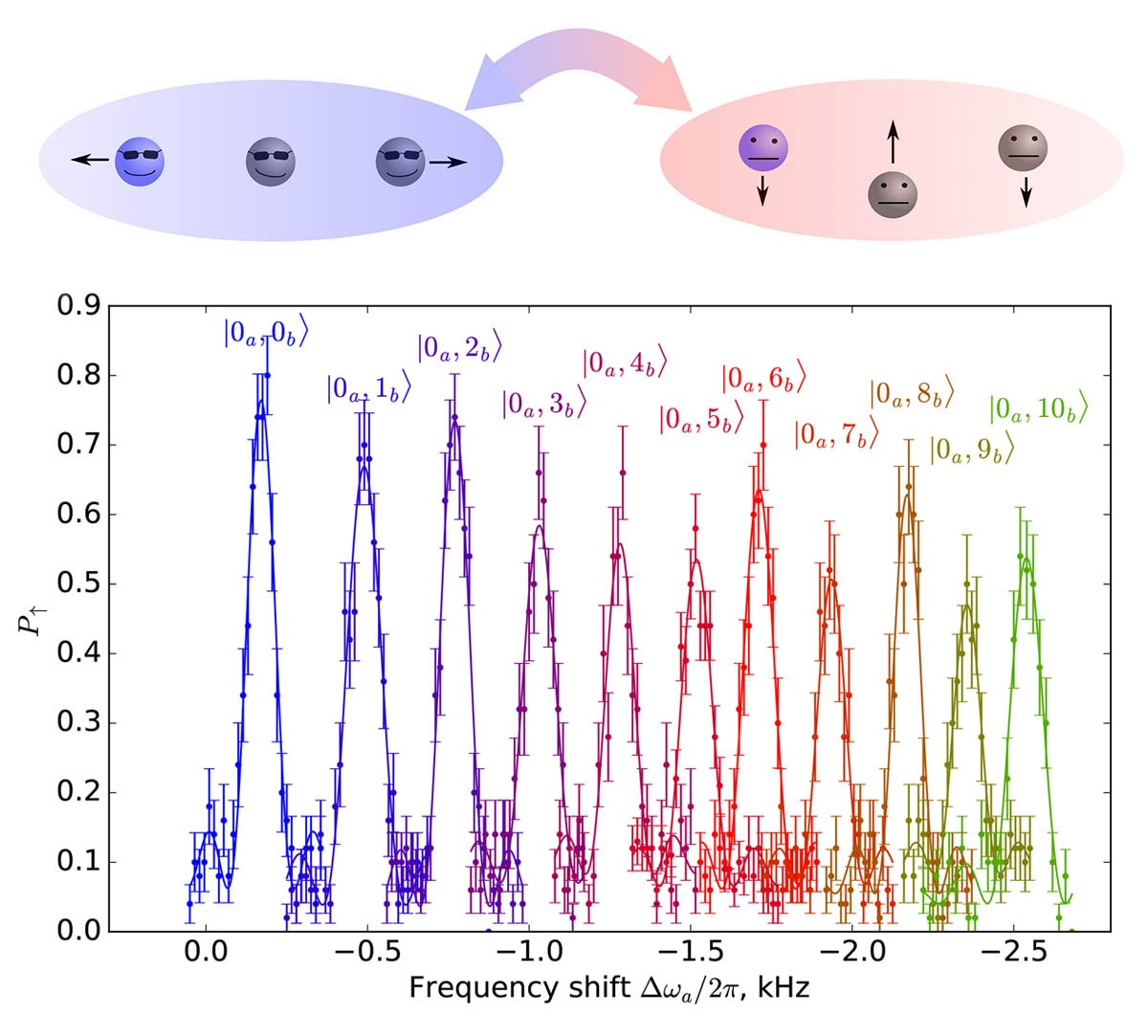Dzmitry Matsukevich's Group |

|
Motion of ions in the trap can be represented as a set of normal modes, each having its own frequency. While these modes are usually considered independent, anharmonicity of the Coloumb interaction between the ions introduces coupling between them. This coupling is a nonlinear effect analogous to the well known model of parametric oscillator in optics, however, in case of trapped ions interaction between the modes manifests itself even on the level of single quanta.
For example, a single quanta of motion (phonon) in the axial mode can be converted to two phonons in the radial mode and vise versa if the frequency of the radial mode is exactly twice the frequency of the radial mode[1]. If the frequencies of the two modes do not satisfy the resonance condition, the interaction between them manifests as a cross-Kerr effect: excitation of one mode shifts the frequency of the other mode[2].
Our group explores applications of these nonlinear effects to quantum simulations, quantum computing, and quantum thermodynamics.

Fig. 1. Demonstration of cross Kerr effect between modes of motion. One quanta of energy added to a motional mode results in the frequency shift of the other mode.